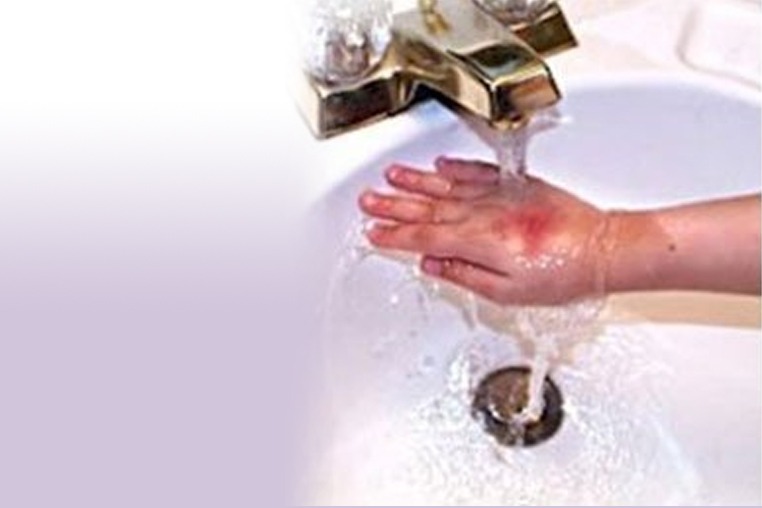First Aid Course Canberra. Stay Safe from the Superbug. Nationally Recognised Certificate. Best Training in Canberra. Free First Aid Manual.
A VICTORIAN man has been diagnosed with the deadly and uncommon fungal superbug Candida auris (or C. auris).
This is the first known case of C. auris in Victoria, prompting authorities to adopt a “search and destroy” approach to prevent an outbreak.
The man in his 70s most likely contracted the infection while in a UK hospital, Victoria’s deputy chief health officer Brett Sutton said.
The state’s health department is working closely with the healthcare facility where the patient was admitted to screen any other patients who may have been in contact with the virus.
According to the department, the superbug causes serious bloodstream infections and even death, “particularly in hospital and nursing home patients with serious medical problems”.
“More than 1 in 3 patients with invasive C. auris infection (for example, an infection that affects the blood, heart, or brain) die,” the department stated.
Those at risk include recent overseas healthcare admissions — particularly in the UK, US, South Korea, India, Pakistan, South Africa, Kuwait, Colombia and Venezuela — and also those who have diabetes mellitus, use antibiotics (especially broad-spectrum antibiotics) and or have recently had surgery.
According to the health department, C. auris is transmitted via person-to-person contact and transmitted through medical equipment such as axillary thermometers.
“Candida auris can cause problems in hospitals and nursing homes as it can spread from one patient to another or nearby objects, allowing the fungus to spread to people around them,” the department warns.
The man was in a Melbourne hospital for a pre-existing condition when the diagnosis was made and was isolated from other patients, The Sun reported
No one else is believed to have been exposed as the man was in a single room, Dr Sutton said.
All infection control precautions are being taken and cleaning has been completed.
Dr Sutton said the fungus was often highly resistant to medicines, which made it hard to treat.
While most healthy people do not get sick from the superbug, vulnerable patients are more susceptible and may develop severe and potentially fatal infections
Outbreaks have occurred in more than 20 countries since the organism was first discovered in 2009.
A warning has been issued advising health services of the case and the steps clinicians can take if they suspect a case of the fungus.
Any confirmed cases (colonisation or infection) of C. auris in a patient should be reported to the Department of Health and Human Services on 1300 651 160.
WHAT IS C. AURIS?
Candida auris is a yeast, a new variety of an organism so common that it’s used as one of the basic tools of lab science.
A lead researcher called it “more infectious than ebola”.
“This bug is the most difficult we’ve ever seen,” Centre for Disease Control and Prevention mycotic diseases chief Dr Tom Chiller said. “It’s much harder to kill.”
According to Maryn McKenna, American journalist and author of Superbug, science can’t yet say where it came from or how to control its spread.
“It’s been on the radar of epidemiologists only since 2009, but it’s grown into a potent microbial threat, found in 27 countries thus far,” she wrote on Wired.
She said the main problem is that this yeast isn’t behaving like a yeast.
“Normally, yeast hangs out in warm, damp spaces in the body, and surges out of that niche only when its local ecosystem veers out of balance,” McKenna said. “That’s what happens in vaginal yeast infections, for instance, and also in infections that bloom in the mouth and throat or bloodstream when the immune system breaks down.
“But in that standard scenario, the yeast that has gone rogue only infects the person it was residing in.
“C. auris breaks that pattern. It has developed the ability to survive on cool external skin and cold inorganic surfaces, which allows it to linger on the hands of healthcare workers and on the doorknobs and counters and computer keys of a hospital room.”

An Australian man is in isolation being diagnosed with the deadly superbug (not pictured) known as C. auris from a hospital in the UK.Source:Supplied
SYMPTOMS AND TRANSMISSION
According to the Victorian Government’s health information website, colonisation is generally on the skin, in the urine or around other indwelling devices (such as tubes and catheters).
Invasive infection can present as sepsis, urinary tract infections, wound infections, ear infections or line infections.
WHY IS IT A MAJOR HEALTH CONCERN
It causes serious infections: C. auris can cause bloodstream infections and even death, particularly in hospital and nursing home patients with serious medical problems. More than one in three patients with an invasive C. auris infection (for example, an infection that affects the blood, heart, or brain) die.
It’s often resistant to medicines: Antifungal medicines commonly used to treat Candida infections often don’t work for Candida auris. Some C. auris infections have been resistant to all three types of antifungal medicines.
It’s becoming more common: Although C. auris was just discovered in 2009, it has spread quickly and caused infections or facility outbreaks in more than a dozen countries.
It’s difficult to identify: C. auris can be misidentified as other types of fungi unless specialised laboratory technology is used. This misidentification might lead to a patient getting the wrong treatment.
It can spread in hospitals and nursing homes: C. auris has caused outbreaks in healthcare facilities and can spread through contact with affected patients and contaminated surfaces or equipment. Good hand hygiene and cleaning in healthcare facilities is essential because C. auris can live on surfaces for several weeks.
Book a first aid course with www.canberrafirstaid.com

